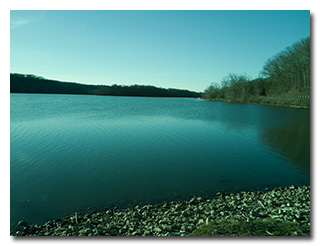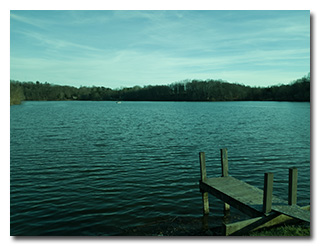
by William Eric McFadden
From the park's website:
-
Lake Logan is located in Hocking County in southeastern Ohio. This territory once belonged to the Wyandot Native Americans, who had a large village known as Oldtown on the Hocking River, located one mile north of Logan. Logan was established by Thomas Worthington in 1816 and named after the Mingo Chief, James John Logan.
The Hocking River provided sufficient water power for the operation of grist and sawmills, particularly at the falls above Logan. The town of Logan was slow to progress until the opening of the Hocking Canal, a branch of the Ohio-Erie Canal, in 1838. Several industries prospered due to the rich mineral resources of the Hocking Valley. The discovery of immense quantities of coal gave rise to a flourishing mining industry. Towns appeared and vanished as quickly as mines opened and closed.
It was soon found that iron ore could be extracted from the sandstone bedrock of the area. During the Civil War, Ohio’s iron industry reached its peak as the leading producer of iron for implements and weapons. No less than 46 furnaces were firing in Ohio’s six-county Hanging Rock Iron Region.
The clay soils of the Hocking Valley helped Ohio become a leader in clay products. The valley’s firebrick industry manufactured clay tile, building and paving bricks, and clay sewer pipe. Evidence of the industry can be seen in the many brick houses and abandoned kilns of the area. Clay is still an important commodity in the region.
Lake Logan was developed in 1955 for recreational purposes. The area was administered by the ODNR Division of Wildlife until 1964, when jurisdiction was transferred to the Division of Parks and Recreation. Originally known as Hocking Lake, the park was renamed Lake Logan to reflect the Native American heritage of the area and to avoid confusion with nearby Hocking Hills State Park and Forest.
Pictures
- Lake Logan: Looking north | Looking south
Description
On Sunday, March 3, 2024, one member of the Southeast Ohio Radio Adventure Team performed a successful activation of Lake Logan State Park in Ohio as part of the Parks on the Air (POTA; link) program.
While enroute home from a shopping trip to Lancaster, and at the urging of his wife, Eric McFadden, WD8RIF, stopped at the fishing peninsula on the eastern shore of Lake Logan to perform a quick activation. Eric was joined by his wife Vickie, his grandson Archer, and little dogs Theo and Ginny.
Arriving at the fishing peninsula at 2130 UTC, Eric found the parking area to be mostly empty. The weather being just about perfect for an outdoors POTA outing, Eric selected a level, out-of-the-way place set up his station, deployed his 28½' wire vertical on his 31' Jackite telescoping fiberglass mast bungied to his folding camp-chair, placed his Elecraft KX3 on the camp-chair's folding table, and was on the air at 2140 UTC.
As at his previous activations of this park, Eric had good cell-signal at this location, and he would be able able to spot himself on POTA Spots (link) and to use POTA Spots to identify possible park-to-park (P2P) QSO opportunities.
Eric began his operation on 20m. Finding himself a frequency to run, Eric spotted himself to POTA Spots, began calling "CQ POTA", and was pleased to be auto-spotted on POTA Spots. His first QSO came immediately with K1NEO in Maine. QSOs came very quickly, with Eric's twenty-seventh QSO coming only twenty-five minutes later, at 2205 UTC, with K0YY in Texas. This excellent run included QSOs with operators located in Maine (3), Missouri, Florida (3), New Jersey (2), Utah, Texas (7), South Dakota, Connecticut (2), Idaho, Oregon, Rhode Island, Massachusetts, North Carolina (2), and Tennessee.
In all, Eric made twenty-seven QSOs in twenty-five minutes of on-air time. All of Eric's QSOs were CW and were made with five watts output.
Eric also submitted his log to the World Wide Flora and Fauna in Amateur Radio (WWFF; link) program.
(return)

